Design of Low RCS Circularly Polarized Patch Antenna Array Using Metasurface for CNSS Adaptive Antenna Applications
Abstract
:1. Introduction
2. Analysis and Design of Low RCS CNSS Antenna Array
2.1. Design of the Metasurface as a Ground of CNSS Array
2.2. Design of the Proposed CNSS Array
2.3. Scattering and Radiation Performance of the Proposed CNSS Array
3. Fabrication and Measurements
4. Conclusions
Author Contributions
Funding
Conflicts of Interest
References
- Pendry, J.B.; Schurig, D.; Smith, D.R. Controlling electromagnetic fields. Science 2006, 312, 1780–1782. [Google Scholar] [CrossRef] [PubMed]
- Leonhardt, U. Optical conformal mapping. Science 2006, 312, 1777–1780. [Google Scholar] [CrossRef] [PubMed]
- Smith, D.R.; Pendry, J.B.; Wiltshire, M.C.K. Metamaterials and negative refractive index. Science 2004, 305, 788–792. [Google Scholar] [CrossRef] [PubMed]
- Gheethan, A.A.; Herzig, P.A.; Mumcu, G. Compact 2 × 2 coupled double loop GPS antenna array loaded with broadside coupled split ring resonators. IEEE Trans. Antennas Propag. 2013, 61, 3000–3008. [Google Scholar] [CrossRef]
- Li, J.X.; Shi, H.Y.; Li, H.; Zhang, A.X. Quad-band probe-fed stacked annular patch antenna for GNSS applications. IEEE Antennas Wireless Propag. Lett. 2014, 13, 372–375. [Google Scholar]
- Jin, Y.; Zhang, H.; Lu, T.; Yang, H.; Gulliver, T. A novel power inversion antenna array for the Beidou navigation satellite system. IEEE Access 2019, 7, 25382–25397. [Google Scholar] [CrossRef]
- Liu, Y.; Zhang, S.; Gao, Y. A high-temperature stable antenna array for satellite navigation system. IEEE Antennas Wireless Propag. Lett. 2016, 16, 1397–1400. [Google Scholar] [CrossRef]
- Pozar, D.M. Microwave Engineering, 4th ed.; John Wiley & Sons: Hoboken, NJ, USA, 2009; pp. 691–692. [Google Scholar]
- Khan, T.A.; Li, J.X.; Li, Z.; Abdullah, M.; Chen, J.; Zhang, A.X. Design of a vivaldi antenna with wideband reduced radar cross section. AEU Int. J. Electron. Commun. 2018, 95, 47–51. [Google Scholar] [CrossRef]
- Zhang, P.; Li, J. A compact UWB and low-RCS vivaldi antenna using ultrathin microwave-absorbing materials. IEEE Antennas Wireless Propag. Lett. 2017, 16, 1965–1968. [Google Scholar] [CrossRef]
- Xu, W.; Wang, J.; Chen, M.; Zhang, Z.; Li, Z. A novel microstrip antenna with composite patch structure for reduction of in-band RCS. IEEE Antennas Wireless Propag. Lett. 2015, 14, 139–142. [Google Scholar] [CrossRef]
- Edalati, A.; Sarabandi, K. Wideband, wide Angle, polarization independent RCS reduction using non absorptive miniaturized-element frequency selective surfaces. IEEE Trans. Antennas Propag. 2014, 62, 743–754. [Google Scholar] [CrossRef]
- Zhou, Z.; Chen, K.; Zhou, B.; Zhao, J.; Feng, Y.; Li, Y. Ultra-wideband microwave absorption by design and optimization of metasurface salisbury screen. IEEE Access 2018, 6, 26843–26853. [Google Scholar] [CrossRef]
- Bao, Q.; Yin, Y.; Yan, D.B.; Yuan, N.C. Application of metamaterials to ultra-thin radar-absorbing material design. Electron. Lett. 2005, 41, 936–937. [Google Scholar]
- Li, S.J.; Cao, X.Y.; Gao, J.; Liu, T.; Zheng, Y.J.; Zhang, Z. Analysis and design of three layers perfect metamaterial-inspired absorber based on double split-serration-rings structure. IEEE Trans. Antennas Propag. 2015, 63, 5155–5160. [Google Scholar] [CrossRef]
- Almoneef, T.S.; Ramahi, O.M. Metamaterial electromagnetic energy harvester with near unity efficiency. Appl. Phys. Lett. 2015, 106, 153902. [Google Scholar] [CrossRef]
- Zhang, Q.L.; Zhang, Q.F.; Chen, Y. Spoof surface plasmon polariton leaky-wave antennas using periodically loaded patches above PEC and AMC ground planes. IEEE Trans. Antennas Propag. 2017, 16, 3014–3017. [Google Scholar] [CrossRef]
- Zheng, Y.; Gao, J.; Xu, L.; Cao, X.; Liu, T. Ultra-wideband and polarization independent radar cross section reduction with composite artificial magnetic conductor surface. IEEE Antennas Wireless Propag. Lett. 2017, 16, 1651–1654. [Google Scholar] [CrossRef]
- Modi, A.Y.; Balanis, C.A.; Birtcher, C.R.; Shaman, H. Novel design of ultra-broadband radar cross section reduction surfaces using artificial magnetic conductors. IEEE Trans. Antennas Propag. 2017, 65, 5406–5417. [Google Scholar] [CrossRef]
- Xue, J.; Jiang, W.; Gong, S. Chessboard AMC surface based on quasi-fractal structure for wideband RCS reduction. IEEE Antennas Wireless Propag. Lett. 2018, 17, 201–204. [Google Scholar] [CrossRef]
- Modi, A.Y.; Balanis, C.A.; Birtcher, C.R.; Shaman, H. New class of RCS-reduction metasurfaces based on scattering cancellation using array theory. IEEE Trans. Antennas Propag. 2019, 67, 298–308. [Google Scholar] [CrossRef]
- Zhao, J.; Chen, Y.; Yang, S. In-band radar cross section reduction of slot antenna using characteristic modes. IEEE Antennas Wireless Propag. Lett. 2018, 17, 1166–1170. [Google Scholar] [CrossRef]
- Jia, Y.; Liu, Y.; Zhang, W.; Wang, J.; Liao, G. In-band radar cross section reduction of slot array antenna. IEEE Access 2018, 6, 23561–23567. [Google Scholar] [CrossRef]
- Turpin, J.P.; Sieber, P.E.; Werner, D.H. Absorbing ground planes for reducing Planar antenna radar cross section based on frequency selective surfaces. IEEE Antennas Wireless Propag. Lett. 2013, 12, 1456–1459. [Google Scholar] [CrossRef]
- Badawe, M.E.; Almoneef, T.; Ramahi, O.M. A true metasurface antenna. Sci. Rep. 2016, 6, 19268. [Google Scholar] [CrossRef] [PubMed]
- Sivakumar, E.; Ramachandran, B.; Priyadharshini, G. Metasurface antenna with switchable polarization. In Proceedings of the 2015 International Conference on Communications and Signal Processing (ICCSP), Melmaruvathur, India, 2–4 April 2015. [Google Scholar]
- Agarwal, K.; Nasimuddin; Alphones, A. RIS based compact circularly polarized Microstrip antennas. IEEE Trans. Antennas Propag. 2012, 61, 547–554. [Google Scholar] [CrossRef]
- Chaimool, S.; Hongnara, T.; Rakluea, C.; Akkeraekthalin, P.; Zhao, Y. Design of a PIN diode-based reconfigurable metasurface antenna for beam switching applications. Int. J. Antenn. Propag. 2019, 2019, 72163224. [Google Scholar] [CrossRef]
- Hussain, N.; Park, I. Design of a wide gain bandwidth metasurface antenna at terahertz frequency. AIP Adv. 2017, 7, 055313. [Google Scholar] [CrossRef]
- Mahmud, M.Z.; Islam, M.T.; Misran, N.; Singh, M.J.; Mat, K. A negative index metamaterial to enhance the performance of miniaturized UWB antenna for microwave imaging applications. Appl. Sci. 2017, 7, 1149. [Google Scholar] [CrossRef]
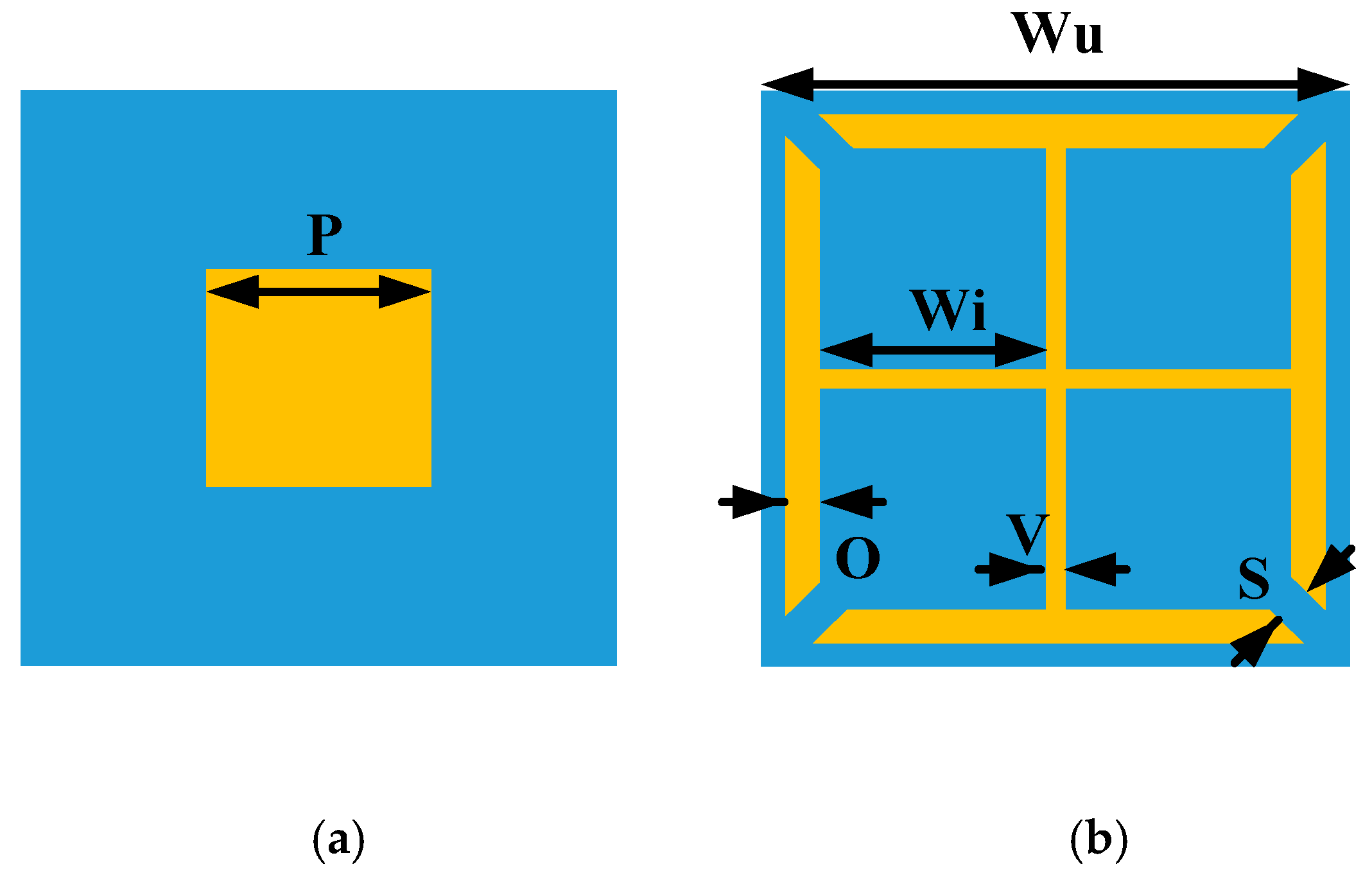
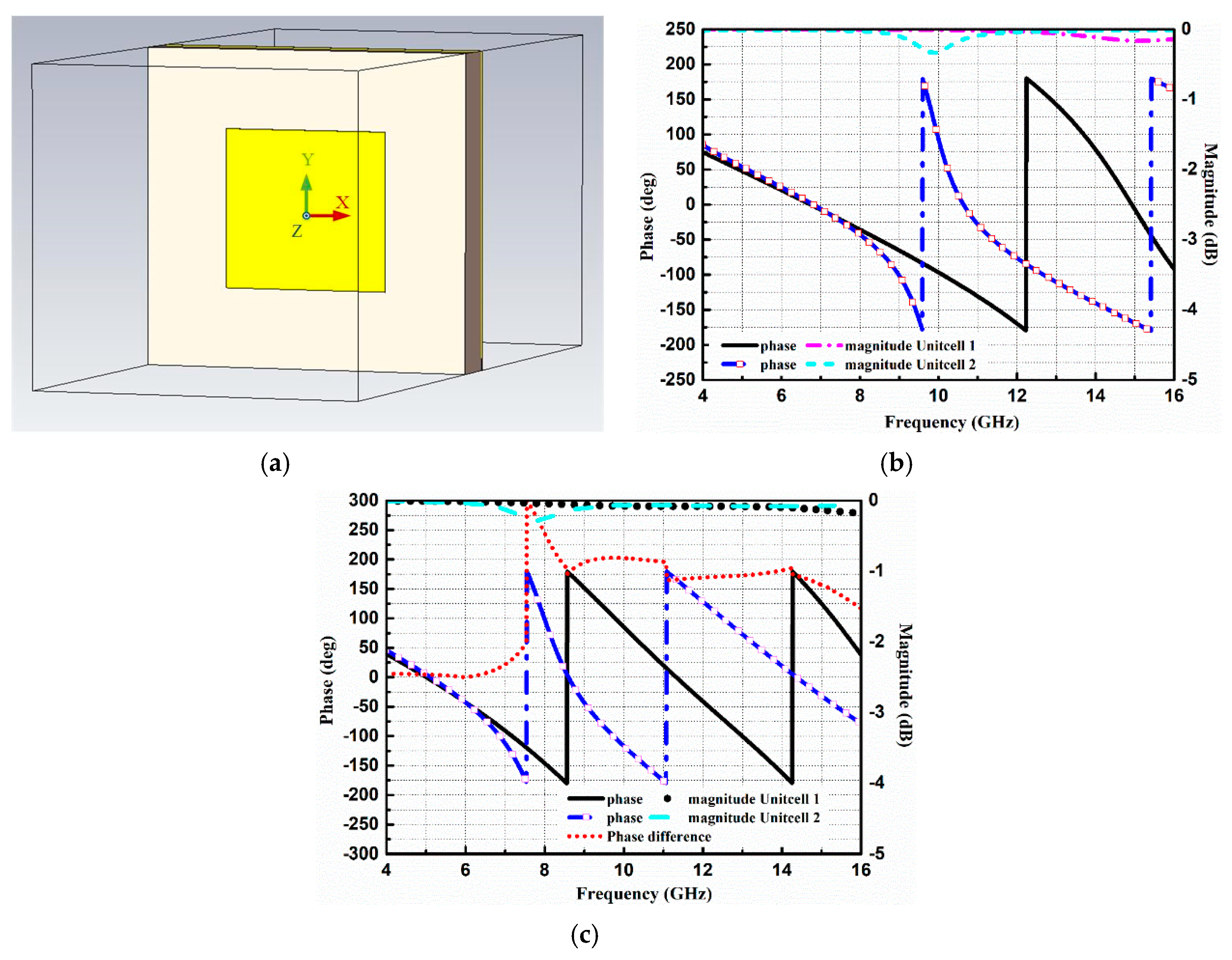
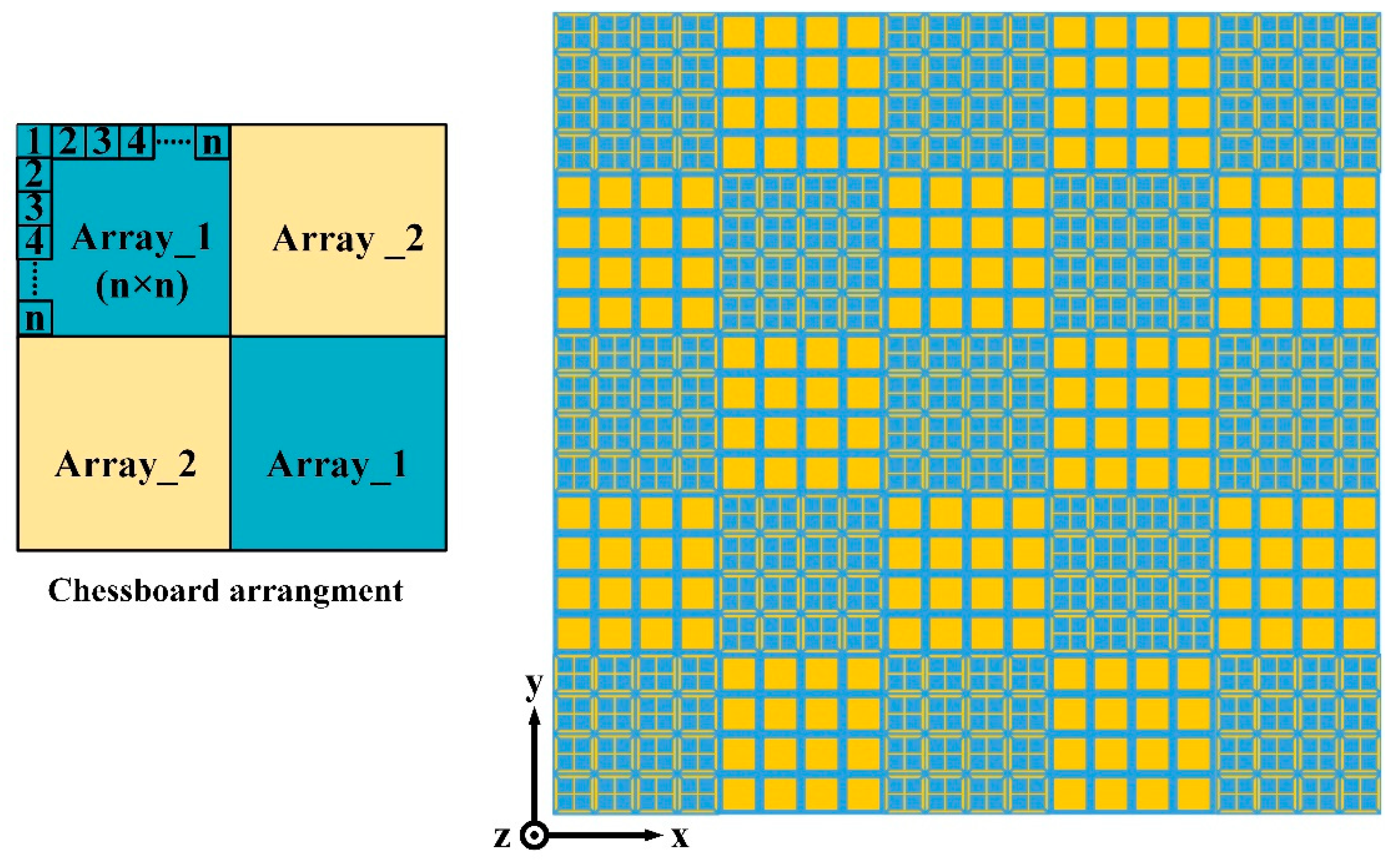
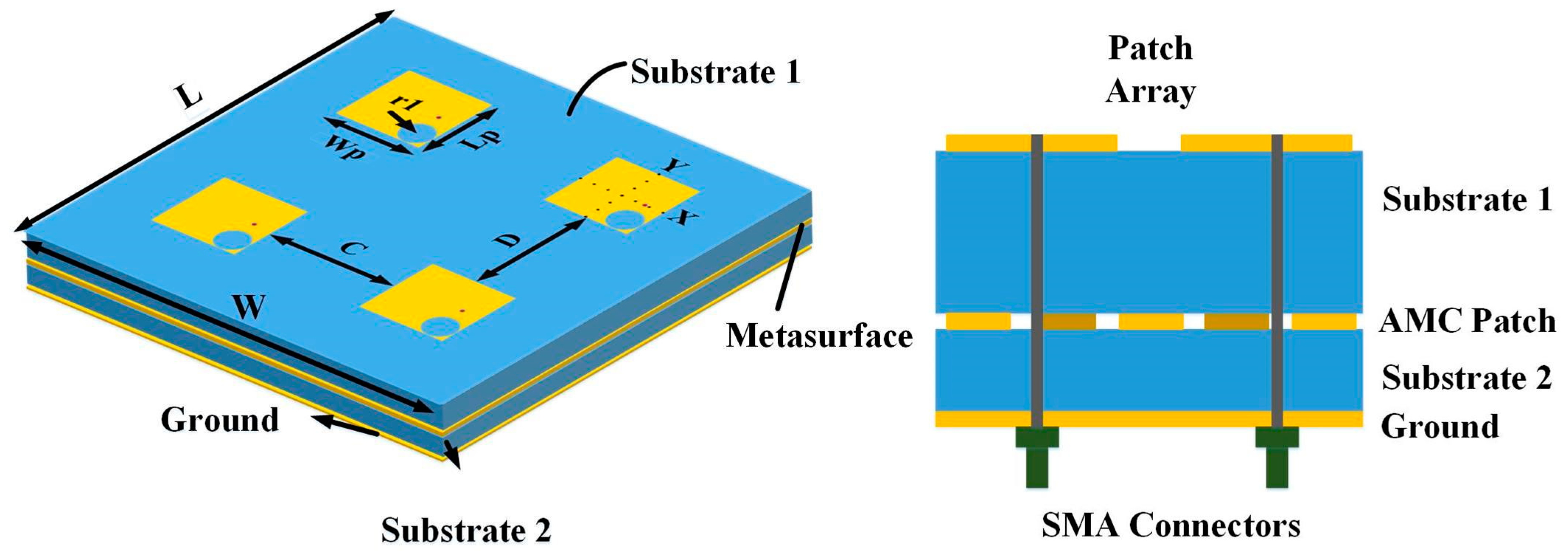
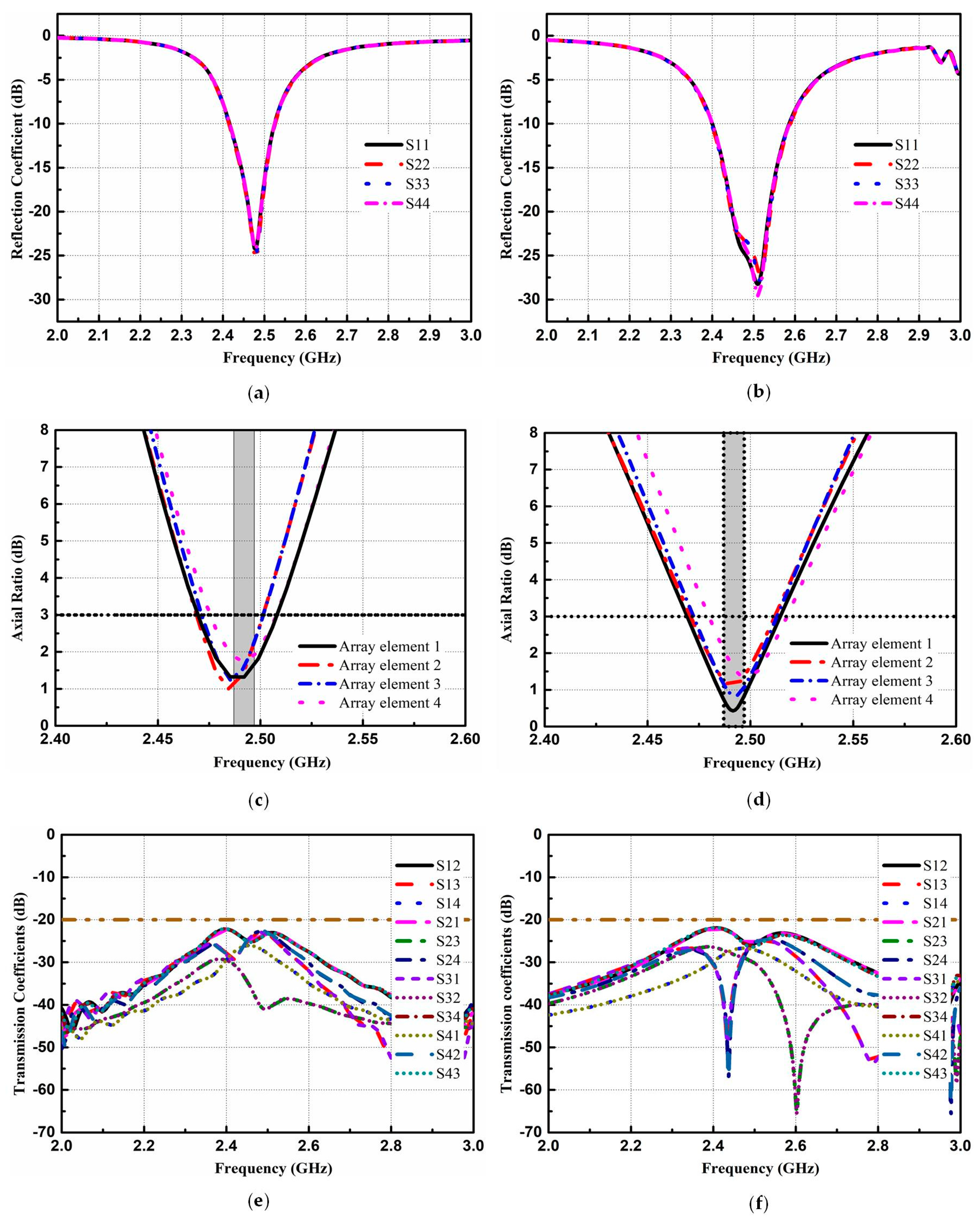
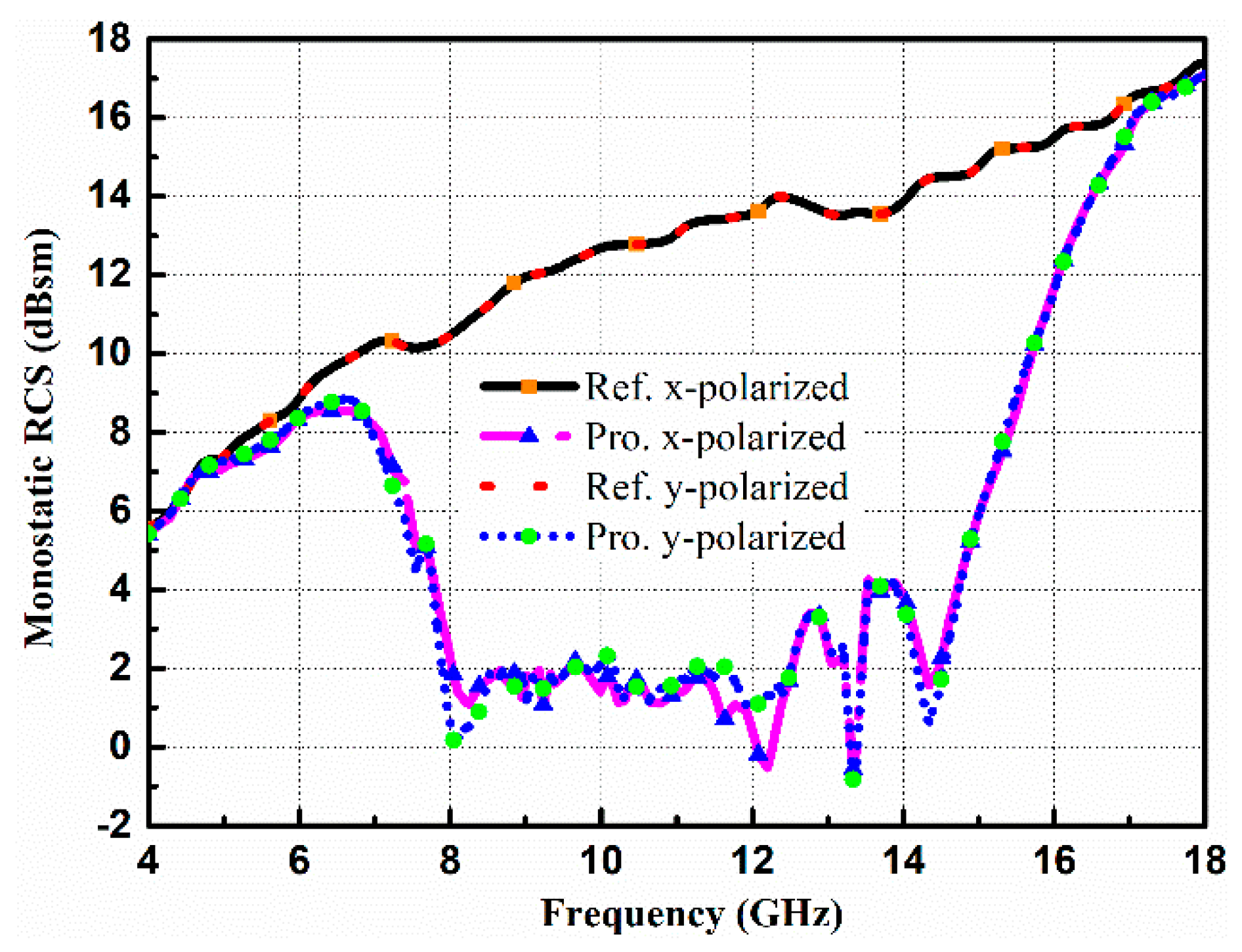
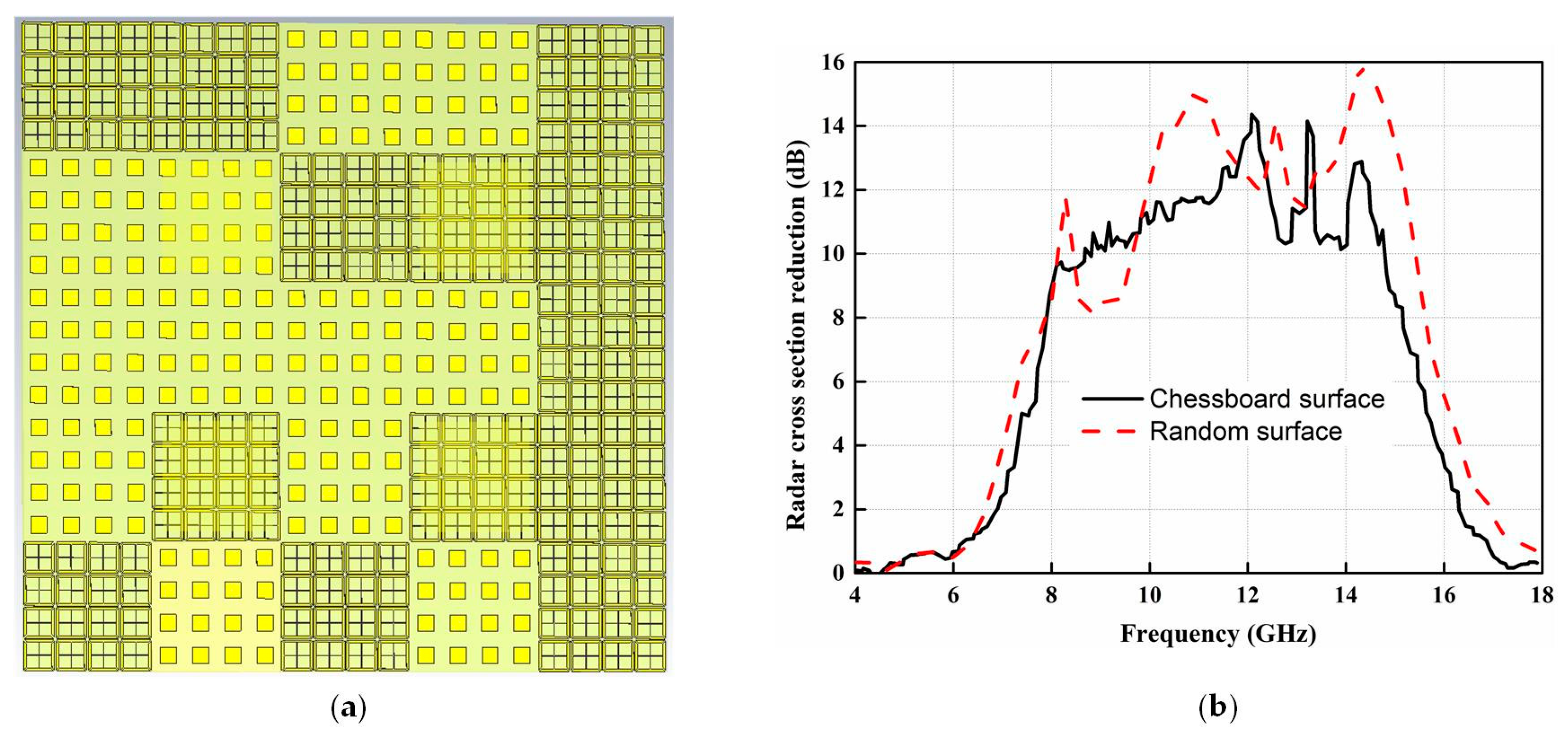
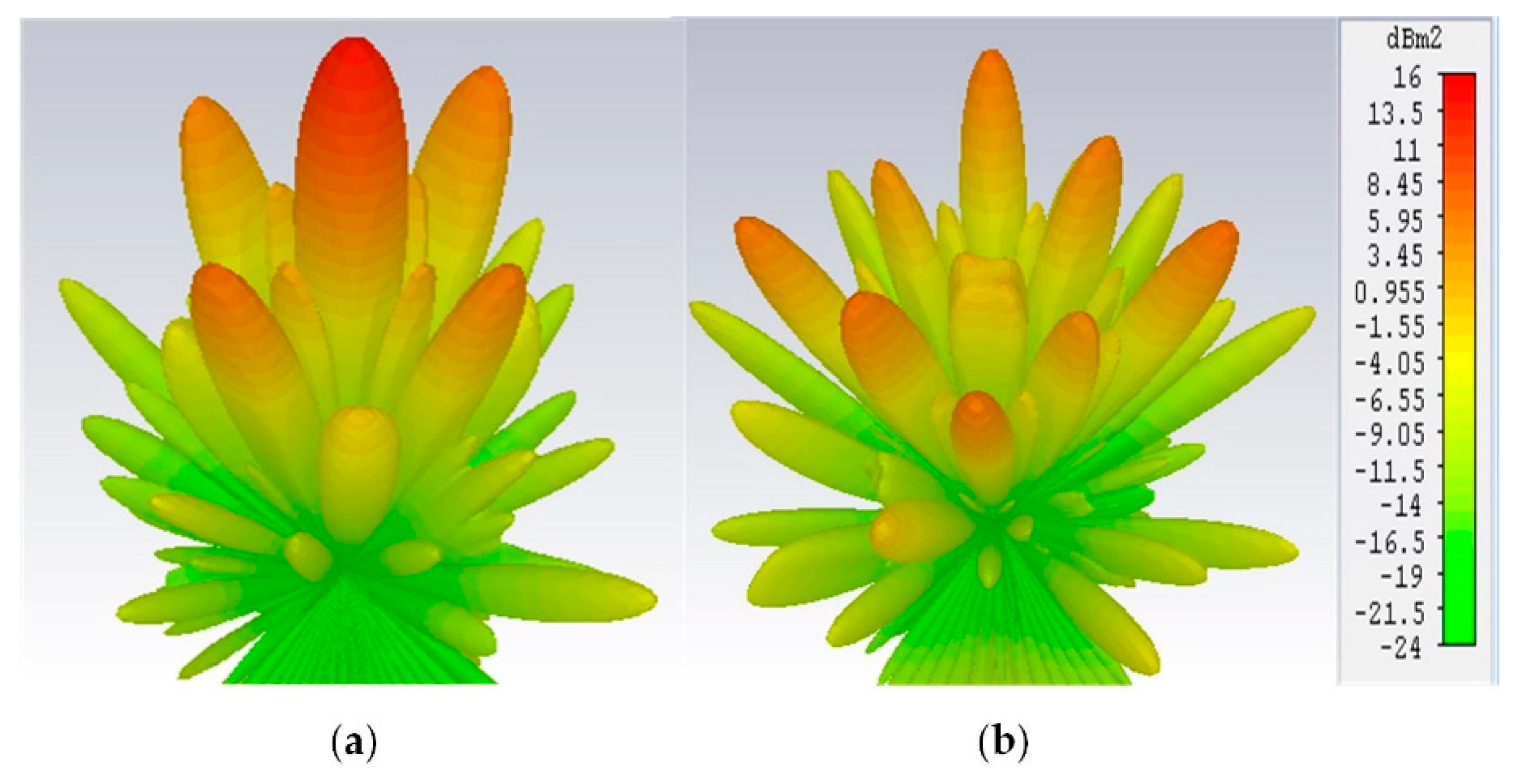
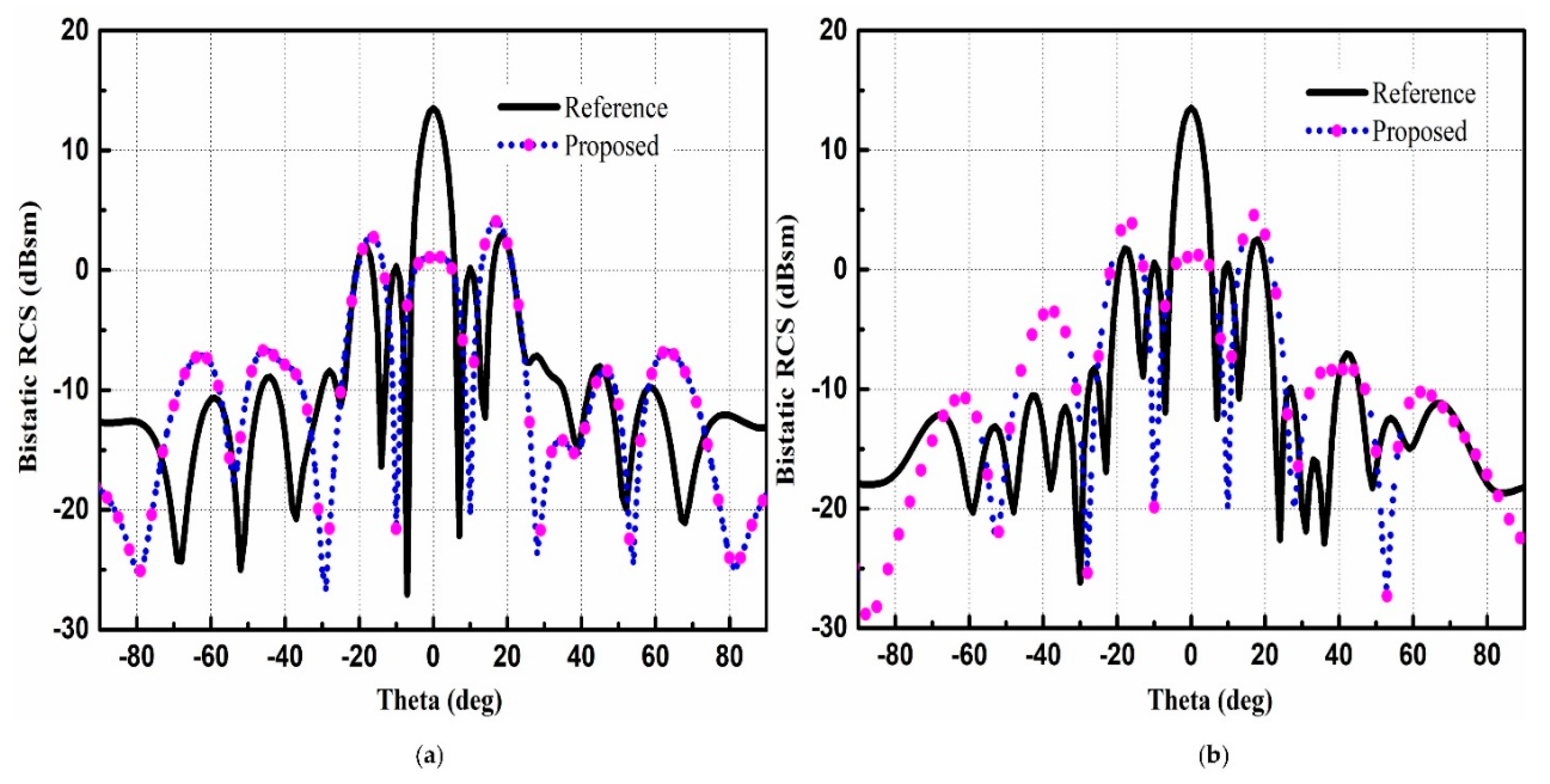
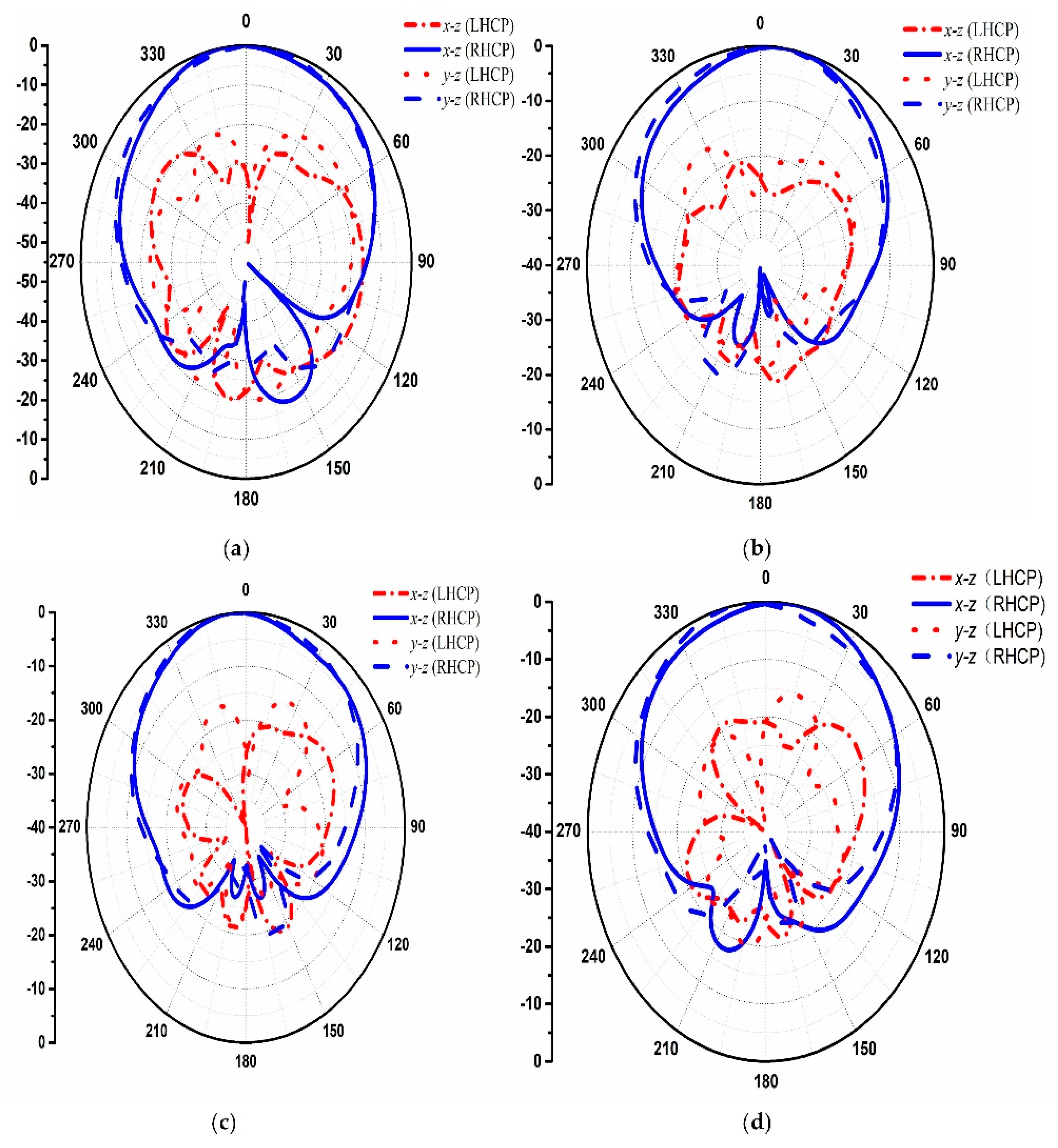
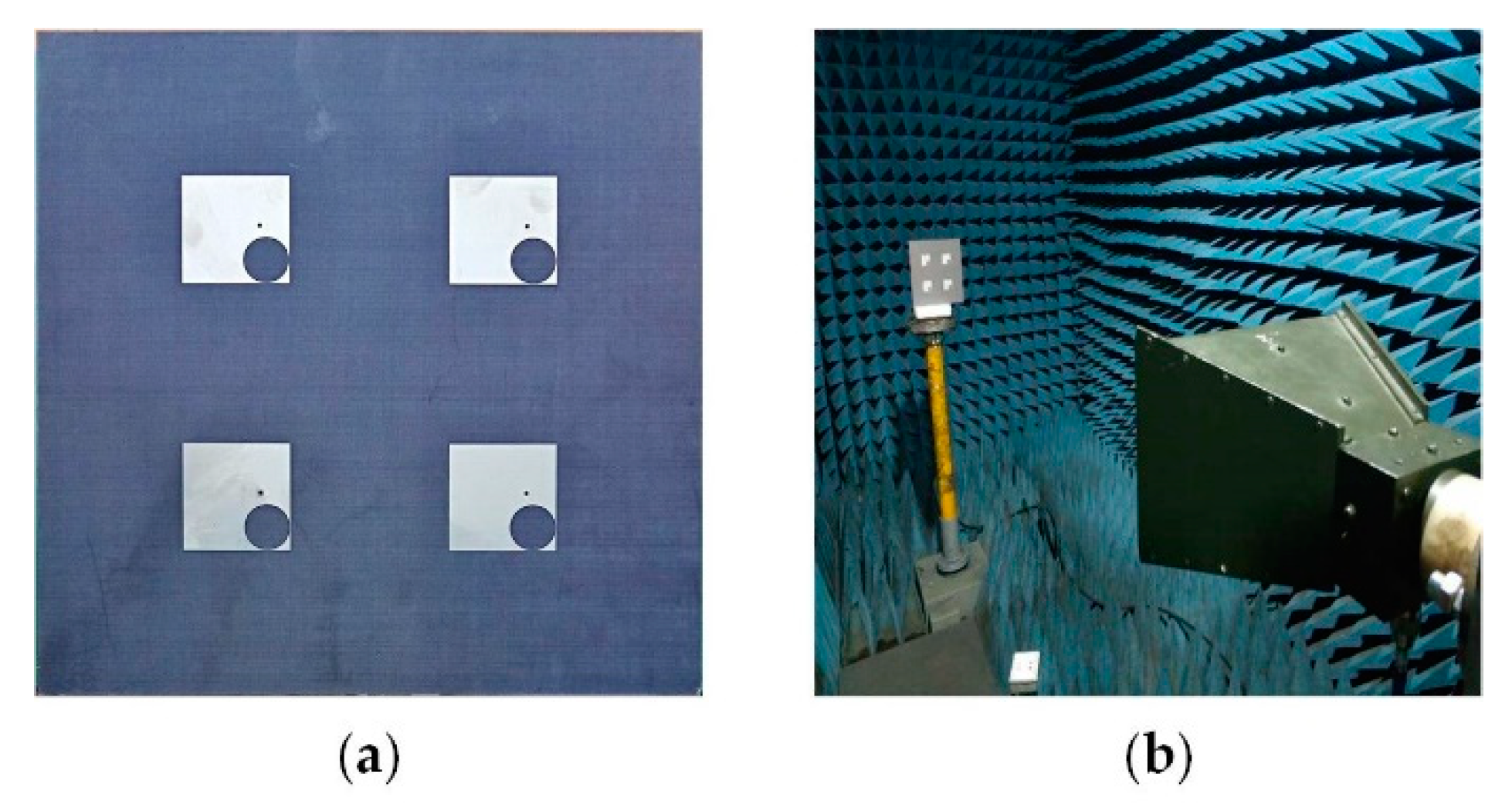
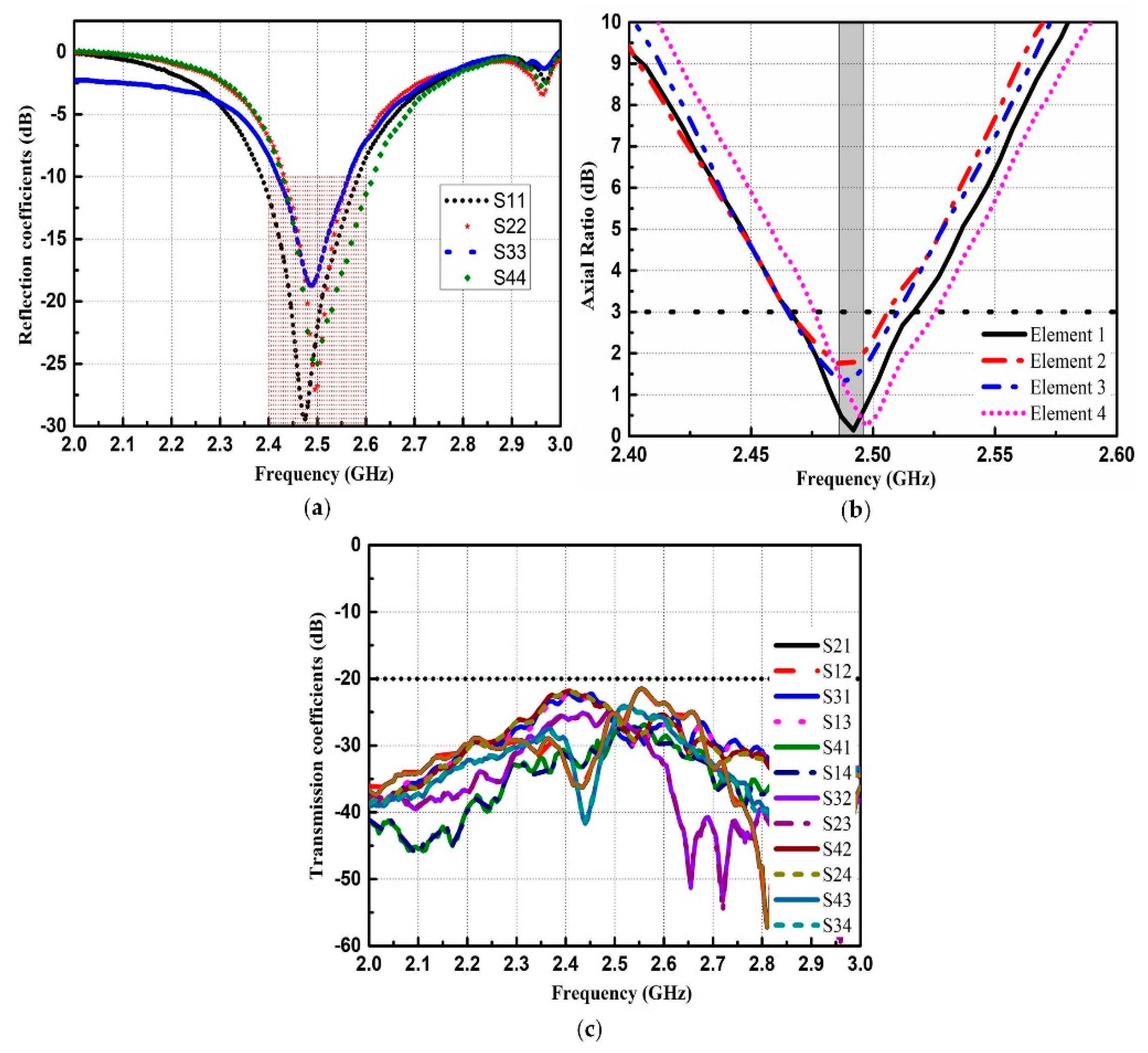
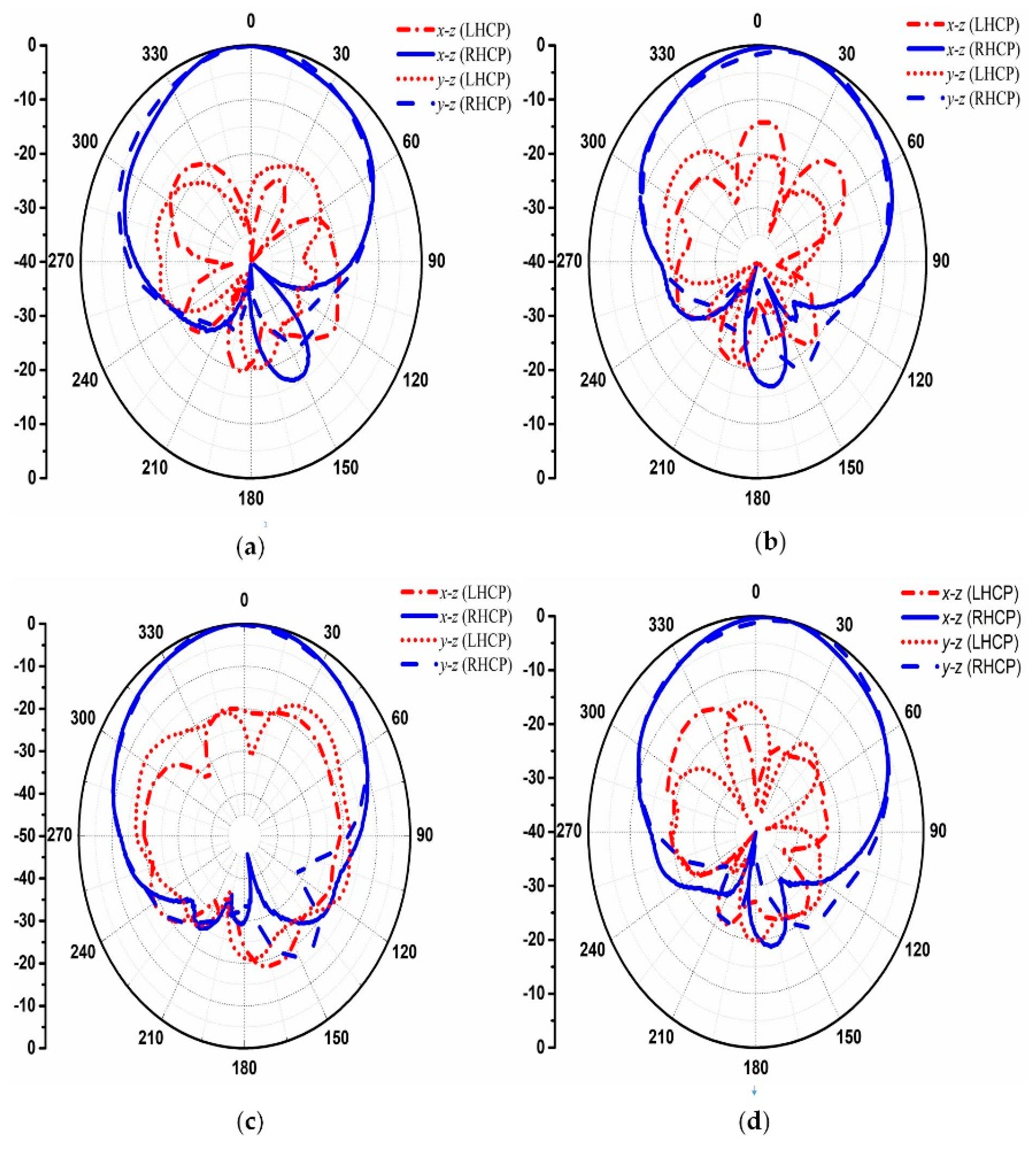
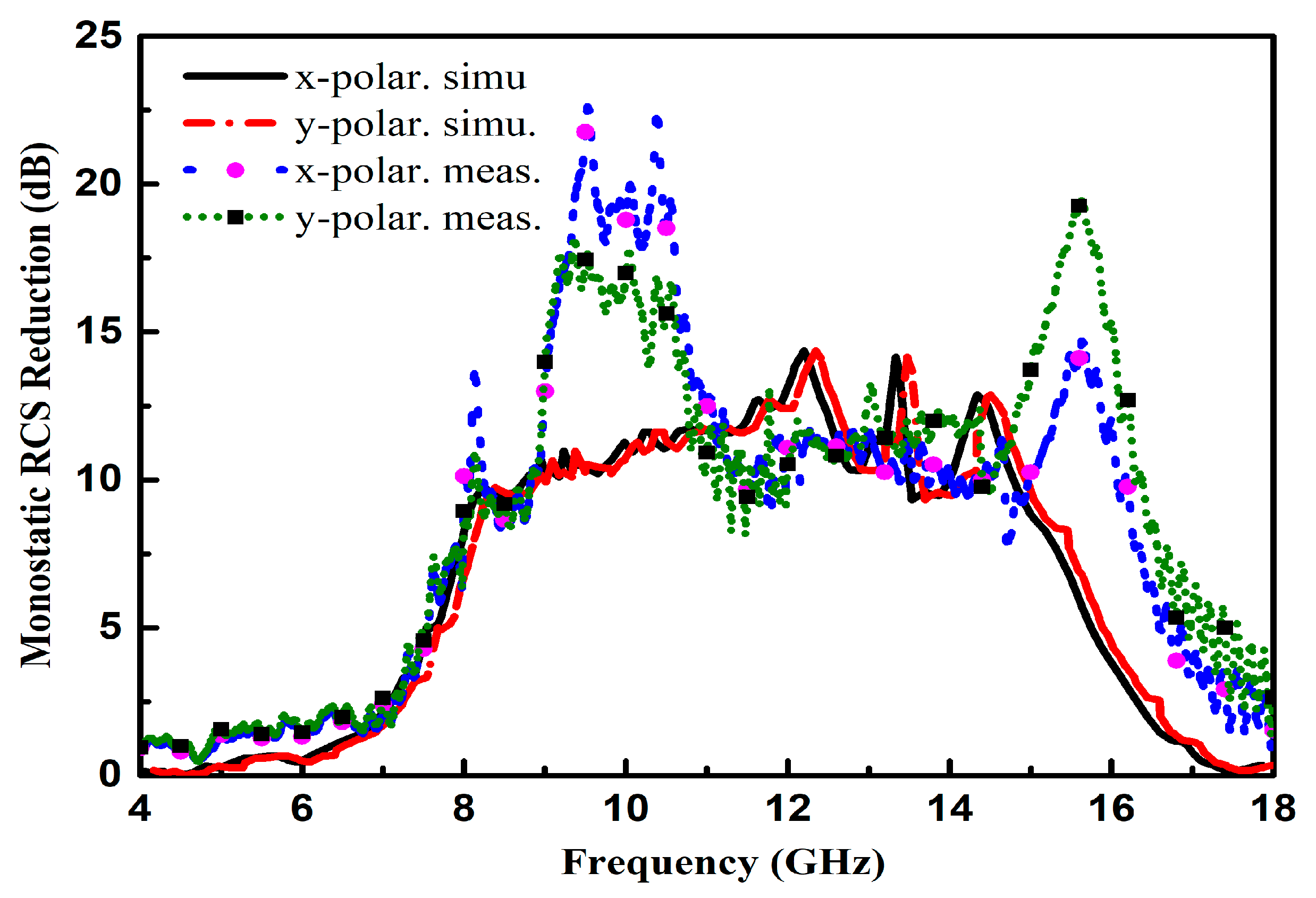
© 2019 by the authors. Licensee MDPI, Basel, Switzerland. This article is an open access article distributed under the terms and conditions of the Creative Commons Attribution (CC BY) license (http://creativecommons.org/licenses/by/4.0/).
Share and Cite
Li, J.; Khan, T.A.; Chen, J.; Raza, M.U.; Zhang, A. Design of Low RCS Circularly Polarized Patch Antenna Array Using Metasurface for CNSS Adaptive Antenna Applications. Materials 2019, 12, 1898. https://doi.org/10.3390/ma12121898
Li J, Khan TA, Chen J, Raza MU, Zhang A. Design of Low RCS Circularly Polarized Patch Antenna Array Using Metasurface for CNSS Adaptive Antenna Applications. Materials. 2019; 12(12):1898. https://doi.org/10.3390/ma12121898
Chicago/Turabian StyleLi, Jianxing, Tayyab A. Khan, Juan Chen, Muhammad U. Raza, and Anxue Zhang. 2019. "Design of Low RCS Circularly Polarized Patch Antenna Array Using Metasurface for CNSS Adaptive Antenna Applications" Materials 12, no. 12: 1898. https://doi.org/10.3390/ma12121898
APA StyleLi, J., Khan, T. A., Chen, J., Raza, M. U., & Zhang, A. (2019). Design of Low RCS Circularly Polarized Patch Antenna Array Using Metasurface for CNSS Adaptive Antenna Applications. Materials, 12(12), 1898. https://doi.org/10.3390/ma12121898





